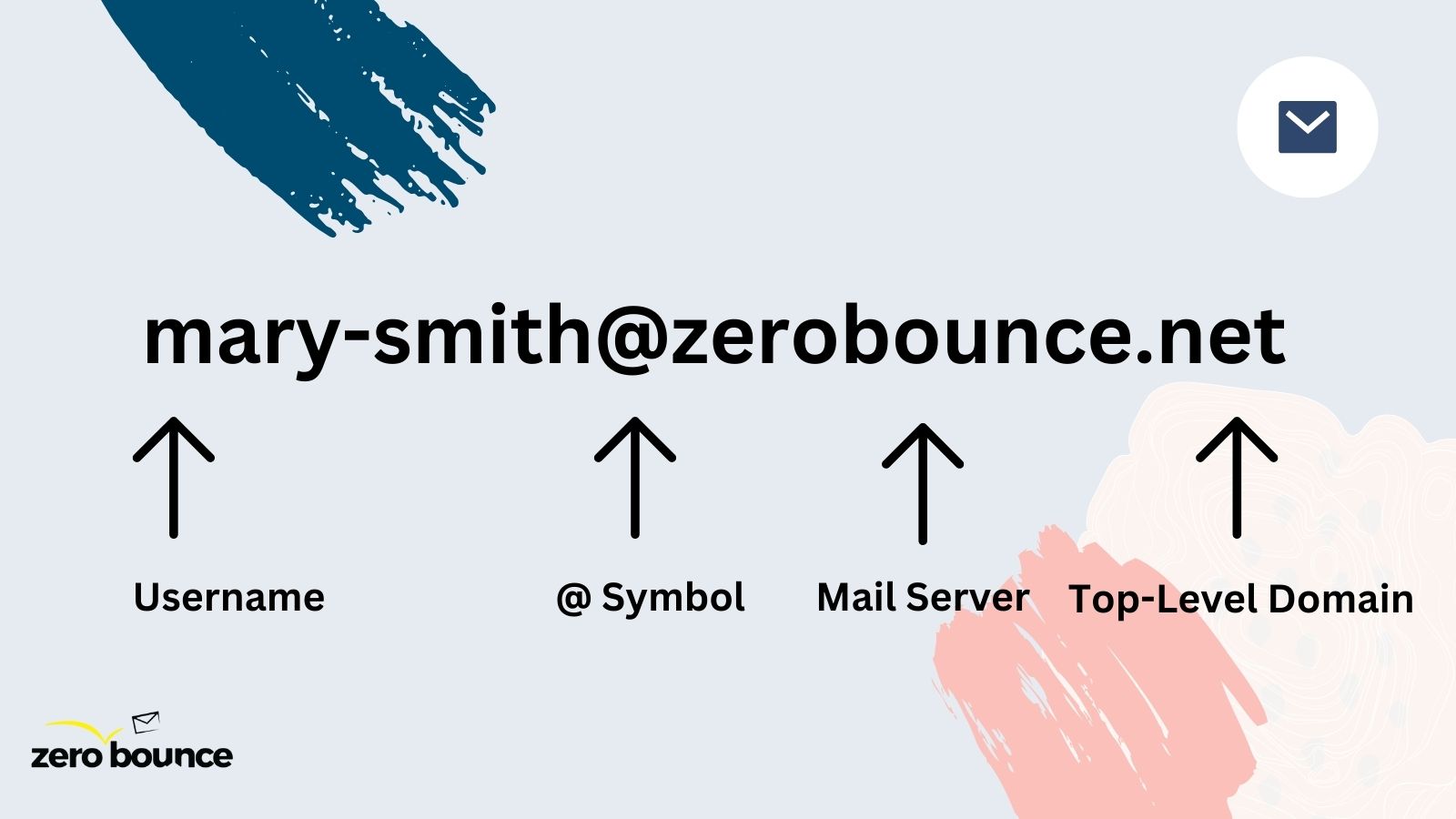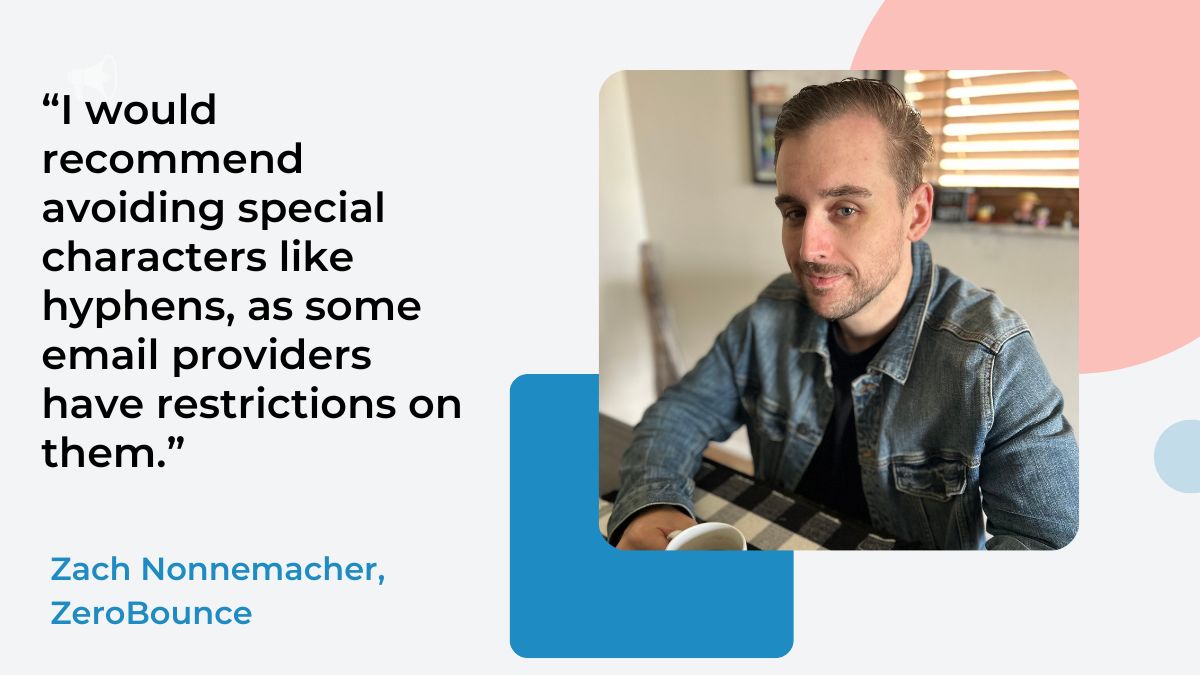
Can You Have A Dash in Your Email Address?
Wondering if a dash is allowed in your email address? Find out how to format your email address for maximum effectiveness—and whether adding a dash is a good idea.
When creating an email address, most don’t consider the little details in the syntax, like whether you can or should use a dash. There’s no reason to think about that until it lands in your lap.
After all, you just want something that works and looks good, right?
But understanding the rules about dashes in email addresses can save you from frustration down the road — whether you’re choosing your own email, setting up a professional one, or troubleshooting an issue.
So, let’s get to the facts and explore what you need to know about using dashes in email addresses.
Can you use a dash in your email address? Follow email address syntax rules
First things first: an email address is made up of a local part (before the @ symbol) and a domain part (the part after it).
It’s pretty straightforward, but there are a few rules that govern the format. To be valid, the local and domain parts must follow certain syntax rules.
For example:
- Letters, numbers, and special characters (like periods, underscores, and dashes) can appear in the local part.
- The domain part (after the @ symbol) is usually made up of letters and numbers, along with periods (.) separating the domain name levels (like gmail.com).
- There’s a reason you don’t see many domain names with a hyphen.
Although you can use dashes in domain names, they’re not common. It is not considered a good practice and should be avoided. Some famous domains like bep-la.com are exceptions to the rule.
Now, let’s get into the interesting part: can you actually use dashes in an email address?

Can you add a dash to your email address?
Yes, dashes can be used in email addresses. But, and here’s the kicker, there are a few limitations to keep in mind:
- Dashes cannot appear at the beginning or end of the local part or the domain. So, no email addresses like -myname@email.com or myname-@email.com.
- Dashes can’t be adjacent to each other in the local part. You can’t have something like my–email@email.com.
This means that while you can use dashes to separate parts of your email address (for example, my-name@email.com), they need to be strategically placed.
But should you have a dash in your email address?
There are times when using a dash in an email address makes sense, such as for someone with a hyphenated last name.
For example, if a company uses the first initial of the first name and the full last name, Peter Smith might have the email address psmith@company.com. However, Peter’s wife, Mary Williams-Smith, may want to use mwilliams-smith@company.com.
But should she?
Email expert Zach Nonnemacher from ZeroBounce weighs in:
“I would recommend avoiding special characters like hyphens, as some email providers have restrictions on them. It’s better to play it safe and steer clear. Using characters like this can increase the chances of typos or incorrect placement, which can result in an invalid address and delivery issues, including bounces.”
Although you technically could use a hyphen in your email address, you may live to regret it. There may be exceptions, but a hyphenated name could usually be expressed without the hyphen. The above email format could simply drop the hyphen making it mwilliamssmith@company.com
There are exceptions to every rule
Sometimes, a hyphen is used in the local part precisely to avoid confusion. For example, let’s say a company uses an email format with the full first and last names without dots. Lauren Jones would be laurenjones@company.com.
That looks fine, but suppose there’s an employee named Ross Sussman. His email address might be rosssussman@company.com. In this case, using ross-sussman@company.com could help avoid potential issues, such as typos or confusion with the address.
For many companies, the typical solution in this scenario is to use a dot, so Ross might have ross.sussman@company.com instead.
That said, it’s not a hard-and-fast rule—companies are free to choose how they format email addresses. Whether it’s a dash, dot, or no separator at all, it’s all about finding what works best for the organization and ensuring deliverability. Never forget the importance of email: function!
Do dashes affect email deliverability?
Now, here’s the part that’s often overlooked: how dashes impact your email deliverability. Generally, using dashes shouldn’t cause any issues with delivery, but there are some things to watch for.
- Spam filters: Some spam filters flag email addresses with unusual characters (including dashes) because they’re often used in spammy or phishing attempts. If your email address looks a little “suspicious,” it might be more likely to end up in the spam folder.
- Miscommunication: If you have a dash in your email address, people might accidentally forget or misplace it when typing. If you’re using a dash, make sure it’s clear when sharing your email address. It might be a small detail, but it can lead to big issues if someone sends an email to the wrong address.

Best practices for choosing an email address
When choosing or setting up an email address, here are some best practices to keep in mind:
- Avoid excessive special characters: While dashes are fine, don’t overdo it with special characters like periods, underscores, or other symbols. A clean, simple email address is more likely to be remembered and typed correctly. A friend of mine had an email address with an underscore in it. The number of times this was misread as a dash or left off resulted in major headaches until he finally relinquished the email address.
- Keep it professional: If you’re setting up a work or business email, avoid using cutesy or overly personal names (unless it’s for a personal project). A simple, professional email address (like johndoe@email.com) is easier for clients or colleagues to trust and remember.
- Think about longevity: If you’re picking an email address for long-term use (like a business), try to choose one that won’t tie you to a particular trend or event. You want something that stays relevant. If you’re a publicist publicitypitches2024@companydomain.com will have an expiration date and then you’ll have to start all over again.
Double check any email you’ve never written to before
Suppose you’re encountering an email address and you’re wondering if it’s legitimate. It may be, but not necessarily. There’s only one right way to handle that situation.
If you’ve never written to someone before, it’s always a good idea to run their email through an email checker first. It’s quick and saves you the headache of wondering if your message ended up in some digital void.
You’ll know right away if the address is valid, so you can feel confident your email is actually landing where it’s supposed to.
Plus, it just makes you look a bit more professional. Nobody wants to send that awkward “Did you get my email?” follow-up if it’s not necessary. Worse, you’ll get bounces.
Bounces eat away at your sender reputation. Over time, your email address becomes less and less credible in the eyes of ISPs and email service providers. Better to check an email address and know for sure that it works than to play a guessing game.
In email, details matter
In the grand scheme of things, using a dash in your email address is a small but important detail. When you do it correctly, it could add a bit of flair or organization to your address without causing any issues.
But always be mindful of email formatting rules, potential deliverability issues, and how others perceive or use your email. By sticking to a few basic best practices and being aware of the nuances, you can ensure your email address is as effective as it is professional. Remember, the purpose of email is always about utility.
Deciding to use a dash at any part of your email address may mean a few moments of clarifying over the phone, repeating yourself: “Yes, a hyphen. No, not a dot,” or “A dash, next to the zero on your keyboard. That’s right,” etc. There may be emails that don’t arrive because of this, and other aggravations.
Over time, those moments may accumulate to a lot of time you spend spelling your address. If you’re ever in doubt, keep it simple. Avoid overcomplicating things, and make sure your email is easy to remember, easy to type, and, above all, easy to trust.
Table of Contents
- Can you use a dash in your email address? Follow email address syntax rules
- Can you add a dash to your email address?
- But should you have a dash in your email address?
- There are exceptions to every rule
- Do dashes affect email deliverability?
- Best practices for choosing an email address
- Double check any email you’ve never written to before
- In email, details matter






